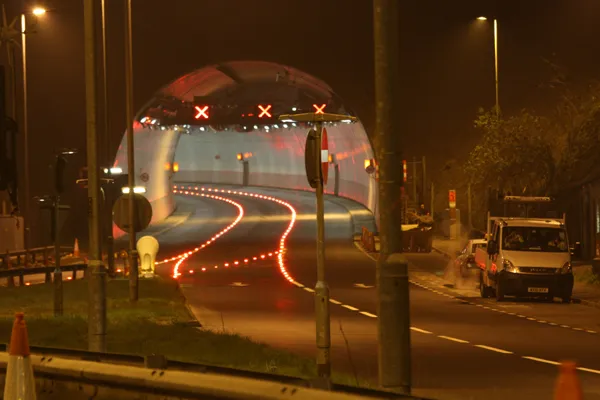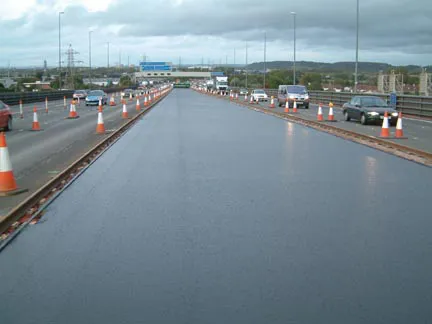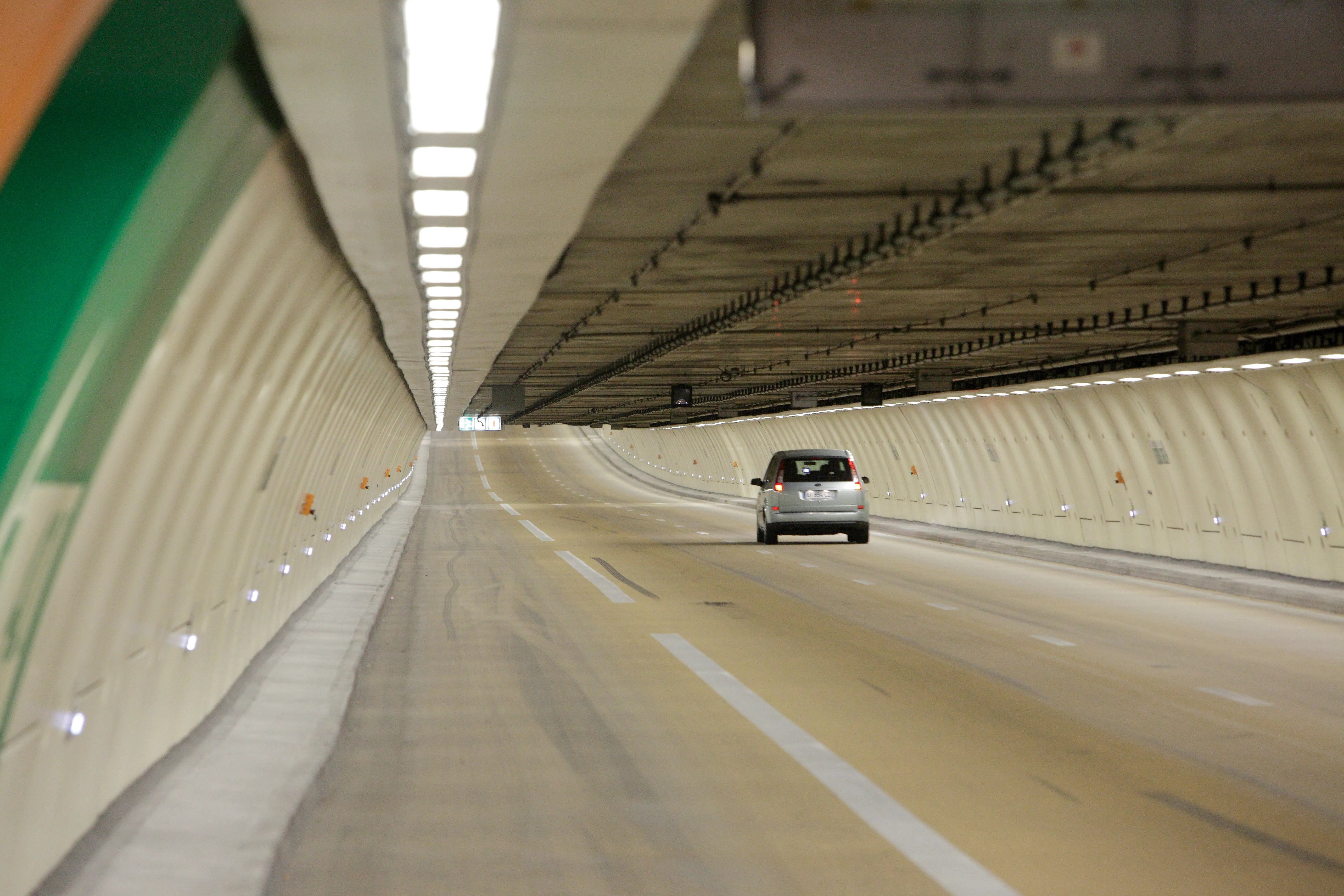Cornwall's Saltash Tunnel on the A38 trunk road is a crucial link between the county, and the neighbouring county of Devon, and is used by 38,000 motorists per day. Opened in 1988, the 410m long road tunnel in south-west England, is a single bore with three traffic lanes, and is part of the tidal flow system across the three-lane Tamar Bridge. The central lane has a speed limit of 30mph (48km/hour) and operates as a reversible lane to cope with holiday and rush hour traffic.
May 2, 2012
Read time: 3 mins

Cornwall's Saltash Tunnel on the A38 trunk road is a crucial link between the county, and the neighbouring county of Devon, and is used by 38,000 motorists per day.
Opened in 1988, the 410m long road tunnel in south-west England, is a single bore with three traffic lanes, and is part of the tidal flow system across the three-lane Tamar Bridge. The central lane has a speed limit of 30mph (48km/hour) and operates as a reversible lane to cope with holiday and rush hour traffic.
Both the tunnel and the bridge operate a combined tidal flow system in order to maximise traffic flow, delineated by illuminated red lane markings and supplemented by overhead control signs. A number of hard-wired LED road stud systems were used over the years for lane separation, but were prone to corrosion and found to be unreliable, suffering system failures and requiring constant maintenance.
To resolve the problem, the1441 UK Highways Agency's and the Tamar Bridge and Torpoint Ferry Authority, opted to install 3i Innovations's IPT (Inductive Power Transfer) system.
A total of 714 bi-directional red Smartstuds illuminated red lane markings will be installed over 4km, including on the Tamar Bridge, previously not possible due to the 40mm thickness of the asphalt on the steel deck. The first stage of the project was completed in March, 2011 and the project is scheduled to be fully operational by July 2011. Lights are spaced at 3 and 6m intervals in multiple dimming and switching groups. Power supplies are relay control linked to the overhead VMS lane signals.
Inductive power transfer (IPT) is the technique that sees power coupled across an air (or other non-metallic material) gap by magnetic induction. Power is transferred without making direct contact with the cable, making it wireless. For traffic applications, the cable is sealed into the road and the light units are situated on the road surface above it; being wireless, the light units have greater tolerance than hardwired light units and can move without breaking the power connection. With no wired connections, there is no corrosion, meaning the system has a much longer life expectancy and is easier to maintain and install than traditional road stud systems, offering significant savings in maintenance costs.
Says Charles Maud, CEO of 3i Traffic: "Traffic authorities around the world are searching for more dynamic traffic management in order to reduce congestion and improve safety. It is a matter of fact that high contrast on-road warning lights do reduce the number of accidents; 3i solves all the historic hardwired electrical problems and we have an advanced understanding of managing long tern survival rates for on-road lights. We are the front runner in offering Traffic Authorities the most cost effective on-road lighting solution based on total cost ownership analysis"
Opened in 1988, the 410m long road tunnel in south-west England, is a single bore with three traffic lanes, and is part of the tidal flow system across the three-lane Tamar Bridge. The central lane has a speed limit of 30mph (48km/hour) and operates as a reversible lane to cope with holiday and rush hour traffic.
Both the tunnel and the bridge operate a combined tidal flow system in order to maximise traffic flow, delineated by illuminated red lane markings and supplemented by overhead control signs. A number of hard-wired LED road stud systems were used over the years for lane separation, but were prone to corrosion and found to be unreliable, suffering system failures and requiring constant maintenance.
To resolve the problem, the
A total of 714 bi-directional red Smartstuds illuminated red lane markings will be installed over 4km, including on the Tamar Bridge, previously not possible due to the 40mm thickness of the asphalt on the steel deck. The first stage of the project was completed in March, 2011 and the project is scheduled to be fully operational by July 2011. Lights are spaced at 3 and 6m intervals in multiple dimming and switching groups. Power supplies are relay control linked to the overhead VMS lane signals.
Inductive power transfer (IPT) is the technique that sees power coupled across an air (or other non-metallic material) gap by magnetic induction. Power is transferred without making direct contact with the cable, making it wireless. For traffic applications, the cable is sealed into the road and the light units are situated on the road surface above it; being wireless, the light units have greater tolerance than hardwired light units and can move without breaking the power connection. With no wired connections, there is no corrosion, meaning the system has a much longer life expectancy and is easier to maintain and install than traditional road stud systems, offering significant savings in maintenance costs.
Says Charles Maud, CEO of 3i Traffic: "Traffic authorities around the world are searching for more dynamic traffic management in order to reduce congestion and improve safety. It is a matter of fact that high contrast on-road warning lights do reduce the number of accidents; 3i solves all the historic hardwired electrical problems and we have an advanced understanding of managing long tern survival rates for on-road lights. We are the front runner in offering Traffic Authorities the most cost effective on-road lighting solution based on total cost ownership analysis"








